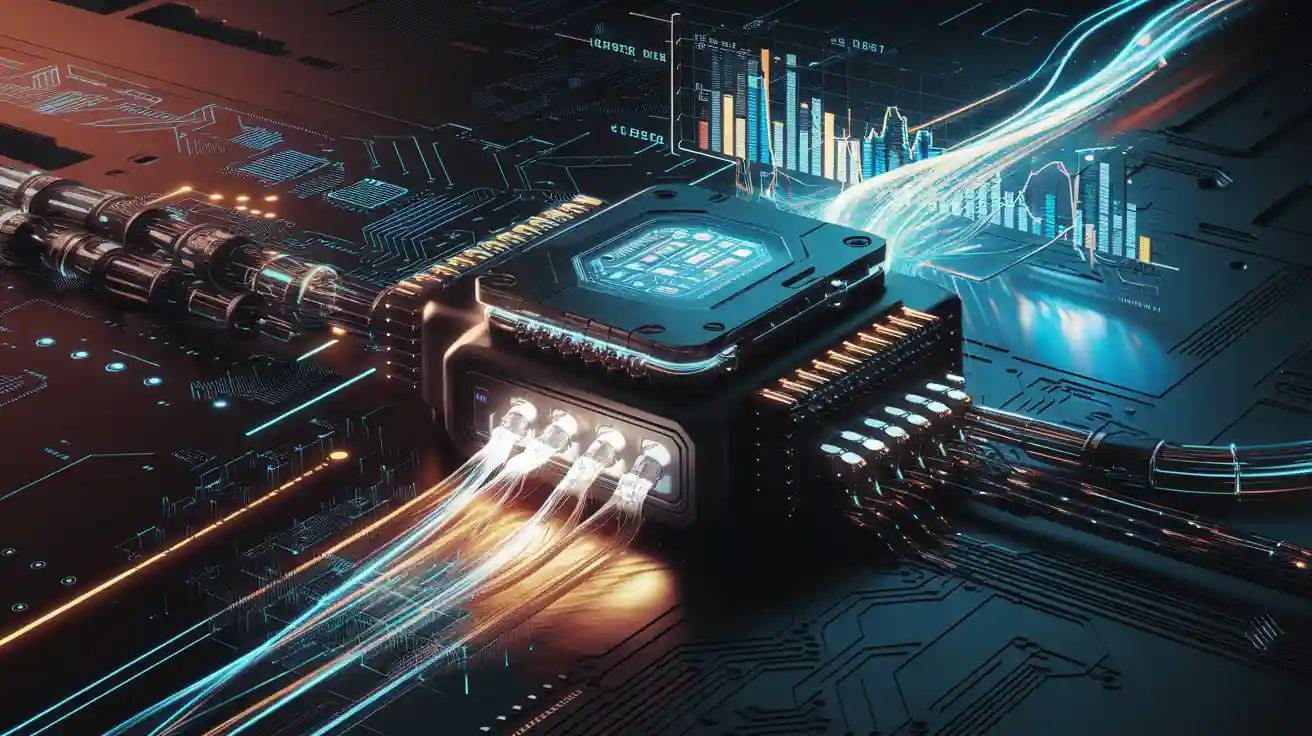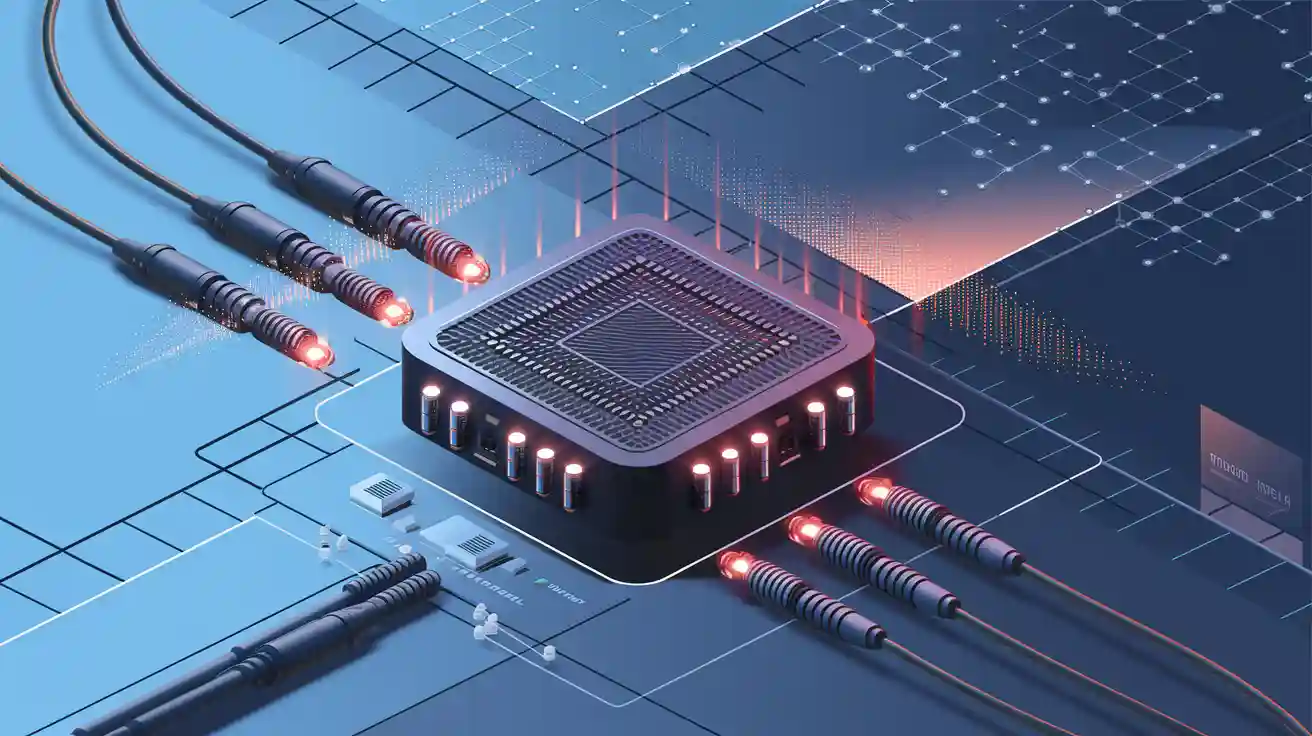
Introduction
In modern fiber optic networks, maintaining optimal performance and preventing unexpected failures are top priorities for network administrators. This is where Digital Diagnostic Monitoring (DDM) and Digital Optical Monitoring (DOM) come into play. These advanced features, built into high-quality optical transceivers, provide real-time insights into the health and performance of fiber optic links.
At LINK-PP, we integrate full DDM/DOM functionality into our optical transceivers, ensuring higher reliability, easier troubleshooting, and proactive network maintenance.
🔍 What Is DDM/DOM?
DDM stands for Digital Diagnostic Monitoring and DOM stands for Digital Optical Monitoring. These two terms are often used interchangeably and refer to the same concept: real-time monitoring of key parameters in an optical transceiver.
These features allow administrators to view vital performance data and status indicators without needing any external tools. Instead, the transceiver itself reports what’s happening internally and on the optical link—helping to maintain system health, troubleshoot problems faster, and prevent network downtime.
📊 What Parameters Does DDM/DOM Monitor?
Transceivers with DDM/DOM functionality can monitor several critical operating metrics, including Operating Temperature Receiver (RX) Power Transmitter (TX) Power Laser Bias Current Supply Voltage and so on.

🛠️ Why Is DDM/DOM Important?
1. Real-Time Monitoring
DDM allows continuous tracking of optical and electrical parameters in real time. This means administrators can view the health of a transceiver on demand without physically removing or replacing it.
2. Fault Detection and Isolation
When something goes wrong in the network, DDM/DOM helps narrow down the root cause. Is the fiber broken? Is the transmitter sending too little power? With DDM, these answers are just a few clicks away.
3. Predictive Maintenance
By monitoring trends—such as slowly dropping TX power or increasing laser current—network operators can predict failures before they happen, and schedule proactive maintenance.
4. Remote Management
DDM/DOM is especially useful in large data centers or telecom setups, where manual inspection of transceivers is not practical. Remote diagnostics reduce technician workloads and response time.
5. Improved Network Uptime
When issues can be detected and addressed quickly, network downtime is reduced, and overall reliability increases—crucial for businesses that rely on constant connectivity.
⚙️ How DDM/DOM Works in Practice
DDM/DOM features are integrated through a standardized digital interface inside the optical transceiver. The system is an extension of the older GBIC specification and can raise alarms and warning flags when parameters exceed normal operating thresholds.
Here’s how it works in a typical scenario:
A transceiver begins to overheat → The DDM system triggers a temperature alarm
The host system receives this alarm and alerts the admin
The admin can take action (e.g., reduce load, replace module) before total failure
In complex optical networks using WDM (Wavelength Division Multiplexing) systems, DDM also helps pinpoint which channel or port is underperforming—drastically improving troubleshooting speed.
🚨 DDM/DOM Enables Fault Detection in 3 Key Areas
Fault Alarm
Get real-time alerts when transceiver conditions deviate from defined safety limits.Fault Location
Isolate which transceiver or link in the fiber network is causing issues—no more guesswork.Fault Prediction
Spot developing issues early, such as increasing bias current or dropping RX power, and take preventive action.
🧠 Why Choose Transceivers with DDM/DOM Support?
Not all transceivers come with DDM/DOM functionality. Choosing transceivers that support it offers a competitive advantage:
Faster and more accurate error detection
Lower cost of network maintenance
Less manual troubleshooting
Better long-term reliability of fiber infrastructure
🌐 LINK-PP Optical Transceivers with DDM/DOM
LINK-PP offers a wide range of high-performance optical transceivers fully equipped with Digital Diagnostic Monitoring (DDM/DOM).
Take for example the LINK-PP LF-BL23TG-10Dx module. It includes DDM support that allows five essential parameters to be monitored with high accuracy, including TX power, RX power, laser bias current, voltage, and temperature. This enables quick diagnostics and enhances the reliability of your optical network.
✅ Summary: DDM/DOM Is a Must-Have Feature
Digital Diagnostic Monitoring (DDM) or Digital Optical Monitoring (DOM) is not just a luxury—it’s a practical and powerful tool for anyone managing a fiber optic network. From temperature monitoring to fault prediction, it empowers technicians and administrators to take control of their optical infrastructure with real-time insights.
If you’re building or upgrading your network, be sure to choose transceivers that support DDM/DOM. And for guaranteed performance, compatibility, and reliability—LINK-PP has you covered.
FAQ
What is the difference between DDM and DOM?
DDM means Digital Diagnostic Monitoring. DOM stands for Digital Optical Monitoring. Both check optical transceivers in real time.
What parameters can you monitor with DDM/DOM?
You can check these important details:
Operating temperature
Transmitter (TX) power
Receiver (RX) power
Laser bias current
Supply voltage
Why is real-time monitoring important?
Real-time monitoring finds problems early. For example, if RX power drops, it might mean a fiber issue. Fixing it fast avoids failures and keeps the network reliable.
Can DDM/DOM predict failures?
Yes, DDM/DOM can spot future problems by watching trends. For example, if TX power slowly drops, the laser might be wearing out. Fixing it early stops sudden downtime.
How do you access DDM/DOM data?
You can see DDM/DOM data using command tools or software. These tools show live details to help you check and fix transceivers.


